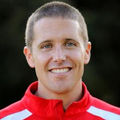Eight-year-old Marcus lives in the city. Surrounded by busy streets and unpredictable strangers, “outside” has become an unsafe place to play. Not having the athletic predisposition to compete and enjoy sports, Marcus has gravitated away from youth sports leagues, and his grade school has been forced to cut their physical education program due to lack of funding.
The time most children Marcus’ age historically would spend climbing trees, playing games or in physical education class is now occupied by readily available inactive pursuits, such as video games and other forms of technology. His lack of physical activity has contributed to an increase in body weight, a decrease in strength-to-weight ratio and decreased enjoyment participating in physical activity.
Marcus’ situation is all too common in our modern culture of youth inactivity. The lack of play, increased competiveness in sports and an absence of physical education programs leave fewer options for kids to be active on a daily basis.
It appears that only about 30 percent of kids get the recommended 60 minutes of vigorous physical activity every day. The result: Roughly one-third of America’s youth are becoming overweight or obese.
While it becomes obvious that inactive youth aren’t expending calories, there are other concerns associated with decreased levels of physical activity and consequent rates of obesity. Youngsters create the physiology, biomechanics and neural ability to move efficiently through the “plastic” process of maturation and development. “Plastic” refers to the pliable relationship of brain development that allows for the formation of new skills, and an enriching environment that allows for the initiation, practice and progression of these new skills.
A child’s physical abilities are always “molding” to this relationship of brain development and interaction with the environment. Brain development allows the opportunity to perform more physical skills and performing these physical skills allows for accelerated brain development.
When children aren’t provided the opportunity to learn and practice a wide variety of physical skills at a young age, physical development can become impaired.
In essence, they experience a detriment in “physical literacy,” which researcher Margaret Whitehead defines as “the motivation, confidence, physical competence, understanding and knowledge to maintain physical activity at an individually appropriate level, throughout life.”
Much like developing the skills to achieve academic literacy, physical literacy must be developed through an interactive process of nature and nurture.
Consider a child like Marcus who has not had access to an enriching physical environment. Inactivity has not only resulted in increased bodyweight, it has created a detriment in his overall level of strength, coordination and physical confidence. In essence, he is progressively becoming physically illiterate. The combination of impaired physical literacy and increased bodyweight decreases the likelihood children like Marcus will enjoy physical activity and make it part of their lifestyle.
With the growing absence of physical education and increasing exclusivity of sports, health and fitness professionals now have an opportunity and obligation to play a major roll in increasing levels of physical literacy among kids to help reverse the current trends of youth inactivity.
Here are some important things health and fitness professionals should keep in mind when trying to create a maximal positive impact:
- Understand the process of developing physical literacy and be able to provide engaging programs based on the specific needs of youngsters.
- Create a positive, empowering, physical activity environment that not only gets kids moving, but allows them to enjoy the process.
- Learn how to assess and facilitate the development of universal, lifelong physical skills that enables participation in physical activity for a lifetime.
With a clear understanding of how children develop, enjoy and adopt physical skills for life, we can provide them the tools to create a long-term relationship with health, wellness and physical activity.




 by
by 







 by
by